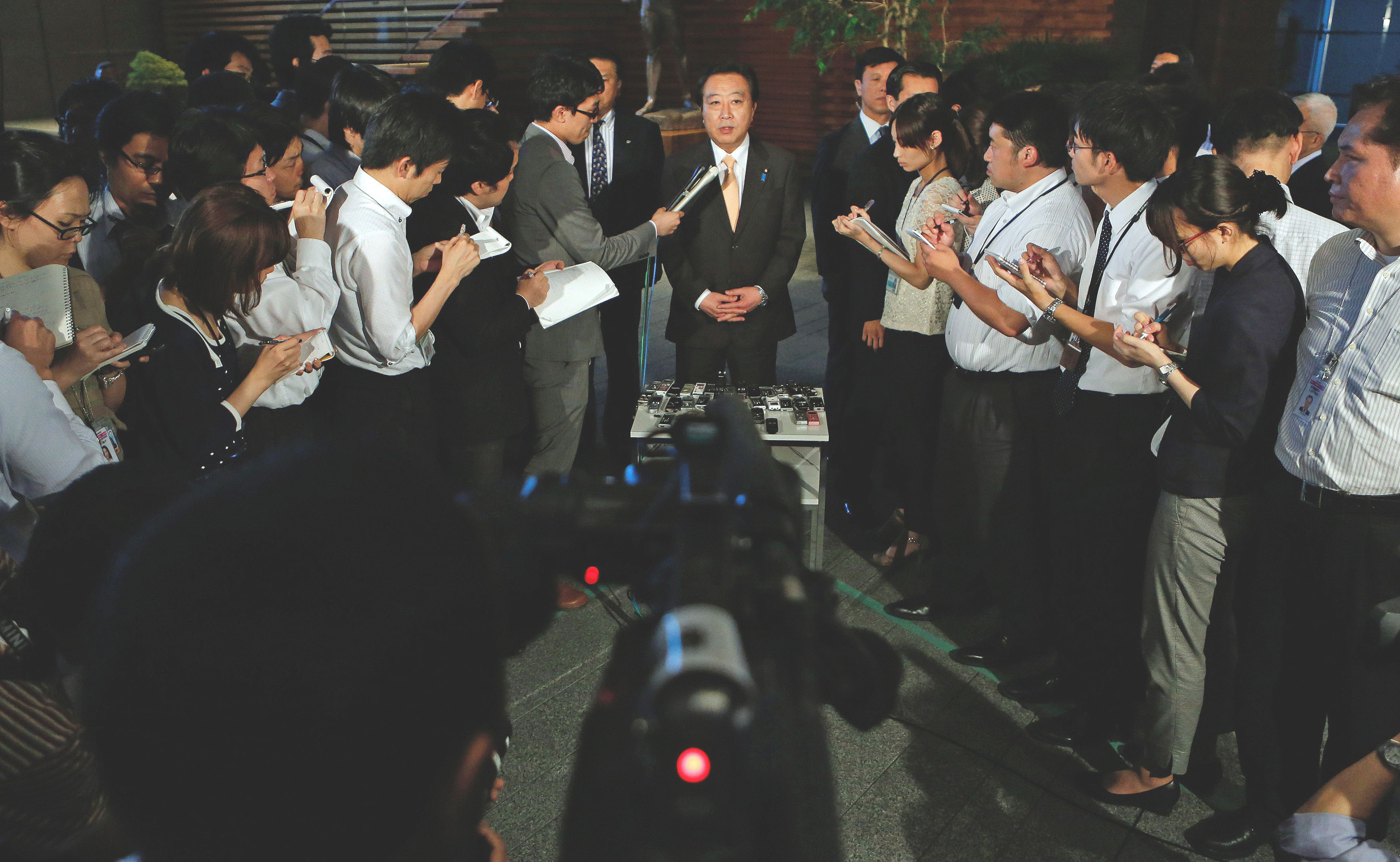Two weeks ago, the Lower House passed a law to increase the consumption tax to 10 percent by 2015, something Prime Minister Yoshihiko Noda has been pushing with blinkered, self-sacrificial dedication. Eventual final passage seems inevitable at this point, and so the only aspect deemed worthy of discussion by the major media is how it affects the ruling Democratic Party of Japan, which has splintered over the bill. As discussed in this space in April, the media bought the consumption tax hike a long time ago and the Finance Ministry made sure the dailies and TV networks "understood" what was at stake, namely Japan's future, which is being threatened by huge government deficits. Even the BBC seems to support the increase based on the idea that the consumption tax is too low by world standards. Experts who claim that the deficit is manageable and/or that the consumption tax isn't the best way to tackle it have been ignored, and now that the central issue has been pushed aside by the DPJ defection there's nothing left to talk about.
But actually there's a lot, even if it's too late for it to make a difference. Even more fundamental to the debate than the meaning of the national debt and the uses of tax revenues is the structure of the tax itself, and several media outlets have gotten around to explaining how the consumption tax is collected. What's shocking is that a good portion of the money consumers believe they are paying as a tax when they buy something in fact never really makes it to the treasury.
To begin with, the consumption tax is not a U.S.-style sales tax, which is how many people understand it. With a sales tax, the retailer adds the tax fee on to the price, collects the money and then passes it on to the relevant tax authority. Japan's consumption tax is more like Europe's VAT, which levies a tax at every stage of distribution: wholesalers pay it when they buy from manufacturers, retailers pay it when they buy from wholesalers, etc. However, the business that "collects" the 5 percent tax doesn't pass that money directly on to the tax authority. Instead, it pays the tax as a function of revenue by subtracting from its sales figures the amount of money it spent on supplies—including the required consumption tax—and then multiplying the difference by 0.05. The final product of this calculation is the money it owes to the government.

















With your current subscription plan you can comment on stories. However, before writing your first comment, please create a display name in the Profile section of your subscriber account page.